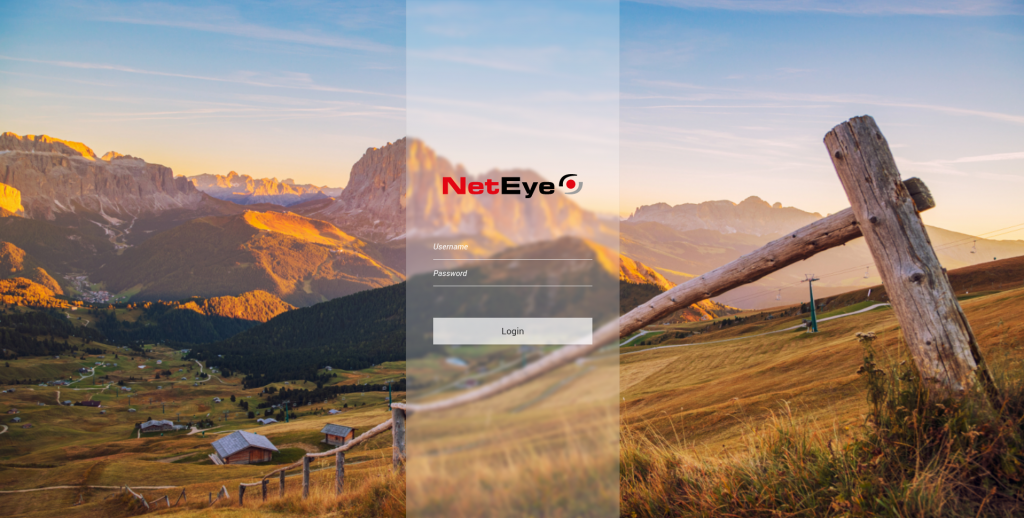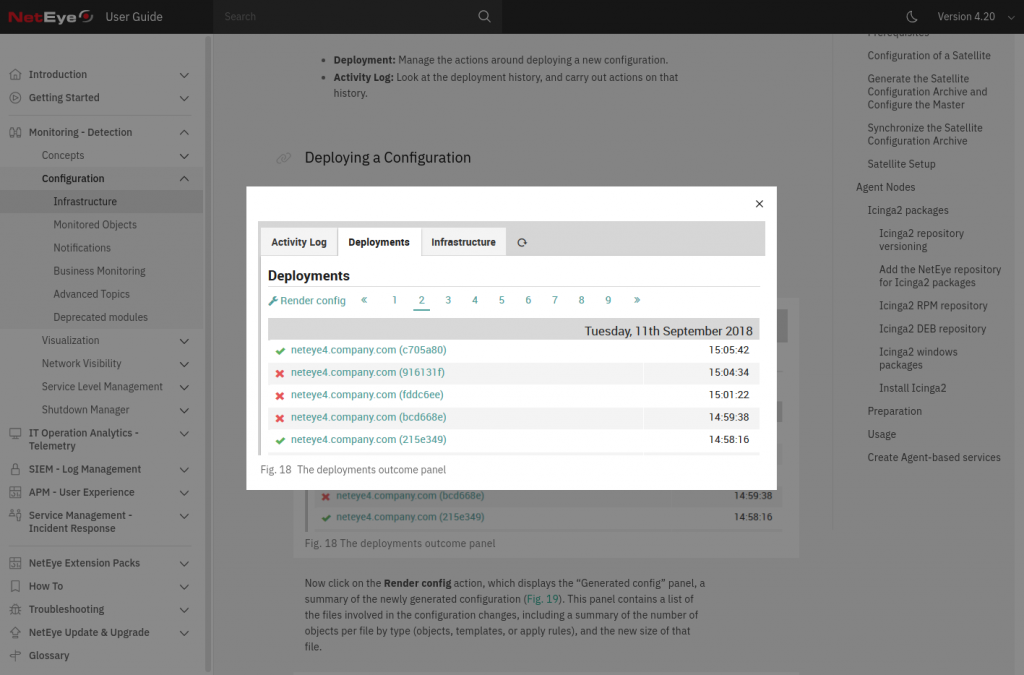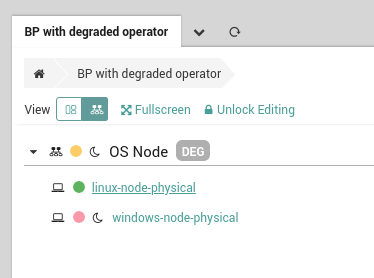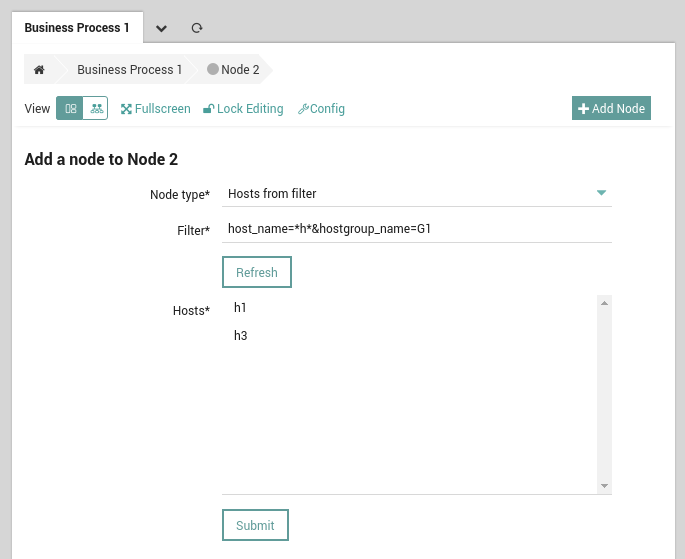NetEye 4.20 Release Notes
Welcome to version 4.20 of our NetEye v4 Unified Monitoring Solution.
NetEye welcomes the autumn and its new release with a majestic sunset panorama view on Seceda peak in Dolomites Alps. The Alpe di Seceda is located on the sunny side of Val Gardena, at the foot of the Parco Naturale Cisles-Odle (nature reserve). From the Seceda summit, you can enjoy a wonderful view of the Dolomites and of all the mountains in South Tyrol – from Ortles to Großglockner (Austria).

General
Satellites
In NetEye 4.20, more than one satellite can belong to a tenant.
As a result, all Telegraf metrics sent by satellites of the same tenant, will be written to the same influx database. All existing configurations will be migrated automatically, to support this new feature.
The Requirements for the NATS communication between Master and Satellites can now be found in the NetEye User Guide.
Satellites – Icinga2
To improve NetEye’s distributed monitoring capabilities, Icinga2 configuration on the satellites was enhanced. This new feature introduces more efficient load balancing and network usage. Icinga2 on satellites supports High Availability, allowing to pair up to two satellites in the same cluster zone together. Satellite configuration is easier, thanks to an (almost completely) automated installation procedure, which requires only few manual steps.
Such that satellites can join the monitoring infrastructure as fast as possible, the most common Icinga2 features like API and notifications are preconfigured automatically.
Please note that you may have to manually migrate your existing satellites to the new standard configuration. Detailed information is provided in the official NetEye User Guide
User Guide
The User Guide keeps continuously improving. Users can now open all images in their full size in the User Guide. Enlarged images will be opened in a dedicated modal window.

Some minor improvements have been implemented:
- We improved the code-block copy button functionality, with a smarter logic for command snippets.
- We created a nicer error page when a non-existing page is accessed.
- The selected menu entries are now more visibly highlighted.
- We visually improved search results, by highlighting the searched words in the result list and inserting an explicit message when no result could be found.
- We removed the superfluous white bottom border on the search result page.
Security
The option to show any stack traces in the UI is now disabled by default to improve security and avoid revealing potentially useful information to a hypothetical attacker. If necessary, it can be enabled in the configuration -> application or in the user preferences page.
Lampo
From NetEye 4.20 onwards, our module-wide quick navigation feature Lampo will be part of the NetEye core, and as such installed by default on all NetEye systems.
Monitoring Detection
Business Process
A “Critical” status in business processes doesn’t necessarily require immediate action. When monitoring staging systems or load-balanced business services, a “Warning” status is preferred to signal that an action is required, but business services are not impacted. For this purpose, we introduced the new “Degraded” operator, which helps to manage unnecessary notifications when a business service is not impacting customers, by downgrading the critical state of a business process in a warning.

Also, the effort required to configure a complex Business Process has been greatly reduced. You can now add one or more monitored objects as nodes at the same time, using the two new options that have been added to the Business Process Nodes creation form. They respectively allow the user to add hosts and services nodes defined by a monitoring filter. Once this option is selected, you can retrieve objects with the desired monitoring filter and select the monitored objects to be added from the list of filtered objects.

SLM Report
For SLM Reports, in addition to the specific availability for each calculation period, it is often helpful to know the overall availability for the entire timeframe of the report. For this reason, SLM reports now include the timeframe availability of each object calculated as the weighted mean of the availabilities of their single calculation periods.
Command Orchestrator
The rendering of the displayed result of a command execution has been improved.
Execution details have separated in a table from the command output, and HTML markup is now supported in the command output, analogous to the plugin output section on the monitoring page.
Tornado
In NetEye 4.20 we focussed on observability for Tornado.
Event tracing combined with visualization tools allows for increased insight. For this reason, the Tornado logger is now integrated with Elastic APM. This integration permits Tornado to stream all relevant logger information to an APM server to be visually inspected and to obtain insightful real-time statistics about the processed workloads.
The goal of tracing is to following a program’s flow and data progression. To achieve this, the Tornado logger now provides structured data that permits to track exactly how an event has flowed inside a pipeline from the root filter up each rule and action.
An improved logging of the Tornado actions now permits to easily to understand if a Tornado action succeeded or failed. Moreover, to help users fix errors in case of failure of Tornado actions, now Tornado always logs the actual reason for which the action execution failed.
Tracing a process tends to be intentionally noisier than a typical logging activity. To avoid overwhelming the filesystem, Tornado now allows altering at runtime the logger configuration so the output can be adapted to ongoing needs. For example, a user could reduce the volume of information when targeting the standard output, while he could, at runtime, decide to increase the details and send the data only to Elastic APM.
Tornado now also provides a user-friendly command-line interface to configure the logger output at runtime. Thanks to this, it is now possible to switch the logger data flow from the standard output to Elastic APM and vice-versa with a single instruction.
The early preview for the new Tornado user interface for Tornado will be available, as to collect user feedback.
It is based on Carbon Design System and can be enabled in the module configuration and supports the NetEye 4 Themes, light and dark, out of the box.
From NetEye 4.20 onwards, Tornado will be part of the NetEye core, and as such installed by default on all NetEye systems.
Userguide – NetEye Extension Packs
NetEye Extension Packs is a project that aims at expanding the functionalities of your NetEye and at facilitating the use of NetEye itself.
To ensure that users can take advantage of the NetEye Extension Packs, the NetEye Userguide now integrates the NetEye Extension Packs section, which contains all necessary information to get started with NetEye Extension Packs.
ITOA – Telemetry
Telegraf – Upgrade
We updated Telegraf version 1.16.3 to 1.19.3.
This update contains the most recent Telegraf Input, Output, Processor and Aggregator plugins as well the latest bug fixes. (Full Changelog Here)







